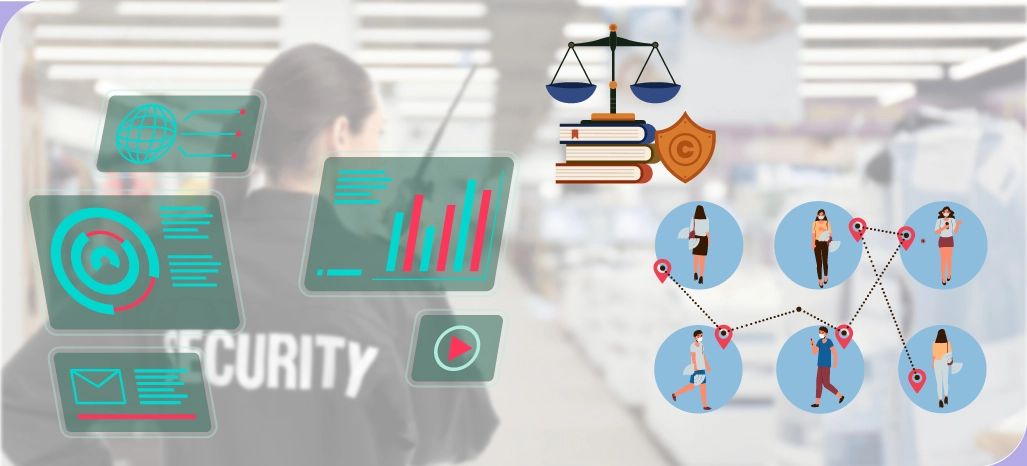How Can Advanced Analytics and Machine Learning Help Combat Against Organized Retail Crime (ORC)?
.webp)
Introduction
Organized retail crime (ORC) is a complex issue beyond traditional theft methods. While smash-and-grab thefts are common, ORC also involves sophisticated schemes like e-commerce fraud, where criminals make false claims about undelivered items, and cargo theft, where merchandise is stolen from trucks or loading docks. Gift card fraud is another example, where compromised credit cards help to buy gift cards for resale. These crimes result in financial losses for retailers, damage their reputation, and can lead to store closures, impacting local communities. To combat ORC effectively, retailers must adopt modern strategies, including advanced analytics and machine learning.
How Organized Retail Crime Groups Outsmart Traditional Security Strategies?

Organized retail crime (ORC) poses a multifaceted challenge to retailers, exploiting vulnerabilities in traditional security strategies. As loss prevention departments struggle to keep up, ORC groups adapt and evolve. Here are five ways they exploit these strategies:
Product Diversification: ORC groups target various products, from high-end fashion to everyday diapers. This diversity makes it harder for retailers to predict their next target.
Tech-Savvy Approach: Fraudsters are adept at using technology, leveraging messaging apps and social media to organize and execute theft schemes. They exploit gaps in retailers' systems and policies to stay ahead.
Multilocational Operations: ORC groups operate across multiple states, locations, and retailers, making it challenging for law enforcement to track their activities effectively. This broad reach helps them evade detection.
Legal Expertise: Some criminals are well-versed in legal nuances and understand state prosecution guidelines and felony thresholds. This knowledge allows them to operate within legal limits to avoid severe consequences.
Social Engineering: ORC groups manipulate shoppers into divulging personal information, recruit employees as accomplices, and bypass store security measures. This psychological approach adds another layer of complexity to combating ORC.
Fortifying Retail Against Organized Crime: Advanced Solutions to Mitigate Profit Loss
Organized retail crime (ORC) poses a significant threat to retailers, often exploiting weaknesses in outdated systems. One common tactic involves using multiple identities to exploit communication gaps between legacy POS systems, CNP providers, and customer service systems. However, advanced analytics and machine learning offer solutions to detect these fraudulent activities.
For instance, the Retail Scrape Linking System utilizes machine learning to enhance the returns process and identify suspicious shopping behaviours. Automatically analyzing shopper information can swiftly flag potential returns fraud and abuse, helping retailers protect their profits more effectively. Advanced technology plays a crucial role in identifying and combating fraudulent activity in retail. By utilizing AI, retailers can detect when a shopper uses multiple email addresses, mailing addresses, or credit card numbers, which are common tactics fraudsters use. These AI-powered solutions provide detailed information to retailers and their associates, helping them close any gaps or loopholes that fraudsters may exploit. This proactive approach not only allows retailers to prevent financial losses but also enhances the overall security of their operations. With AI as a tool, retailers can stay one step ahead of fraudsters and protect their businesses against organized retail crime.
The Ongoing Battle: Strategies to Combat Organized Retail Crime
Mitigating organized retail crime presents a formidable challenge for retailers. Fraudsters employ various tactics, including stolen identities, price arbitrage, employee collusion, and returning stolen merchandise. These criminals constantly evolve, making it difficult for traditional security methods to keep up.
To combat organized retail crime effectively, retailers must evolve their approaches and embrace state-of-the-art technology. Advanced analytics and machine learning can help identify patterns indicative of fraudulent activity, such as multiple identities or suspicious return behaviours.
Additionally, implementing stricter return policies and enhancing employee training on fraud detection can further fortify a retailer's defences. Collaboration with law enforcement agencies and sharing information within the retail community can also help identify and track criminal activities.
By leveraging these strategies and technologies, retailers can better protect their profits and uphold the integrity of the retail industry. While the battle against organized retail crime is ongoing, proactive measures and innovative solutions can significantly reduce its impact and protect businesses from financial losses.
Conclusion: today's organized retail crime (ORC) groups have evolved to outsmart yesterday's technology. They exploit vulnerabilities in outdated systems using sophisticated tactics such as stolen identities, price arbitrage, and employee collusion. These methods allow them to bypass traditional security measures and cause significant financial losses to retailers. Retailers must adapt and leverage advanced technologies like AI and machine learning to combat this growing threat. By implementing these modern solutions and enhancing collaboration with law enforcement and industry peers, retailers can better protect themselves against ORC groups and safeguard their profits and the integrity of the retail industry.
Transform your retail operations with Retail Scrape Company's data-driven solutions. Harness real-time data scraping to understand consumer behavior, fine-tune pricing strategies, and outpace competitors. Our services offer comprehensive pricing optimization and strategic decision support. Elevate your business today and unlock maximum profitability. Reach out to us now to revolutionize your retail operations!
